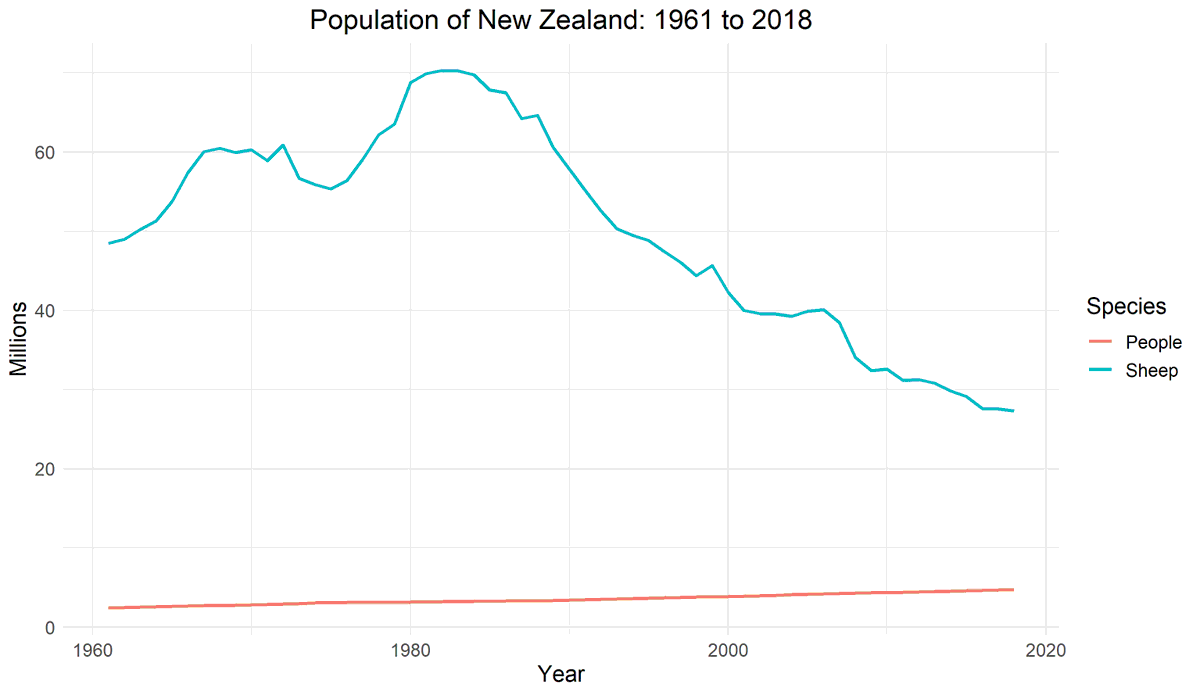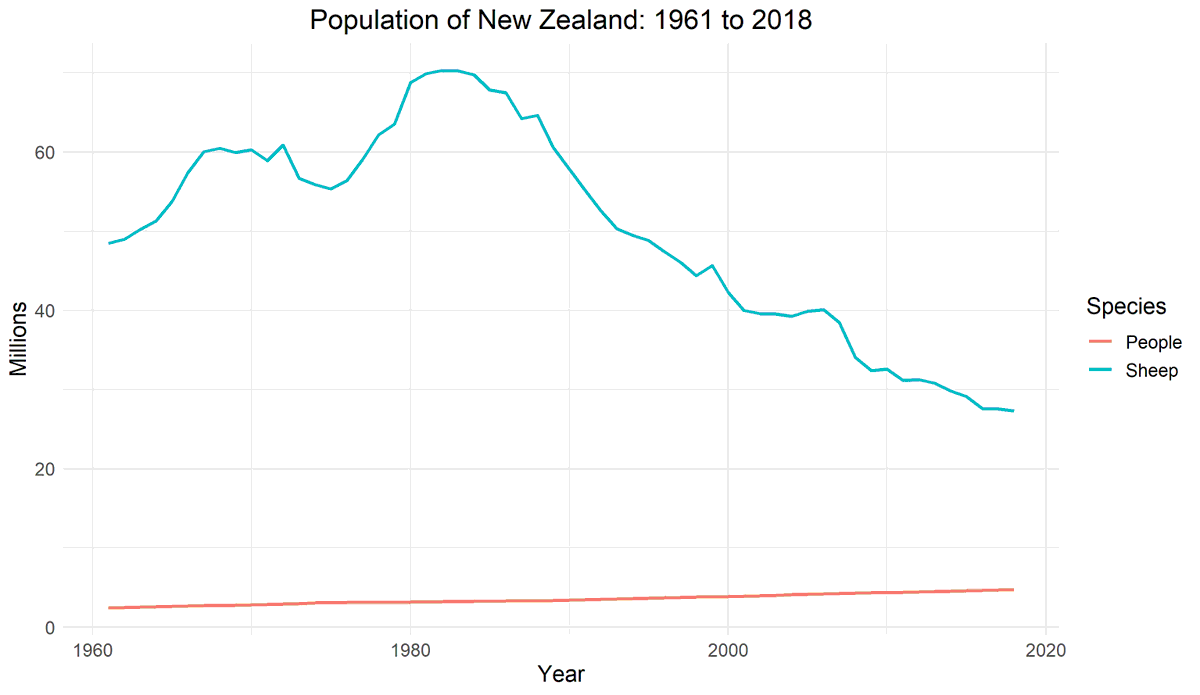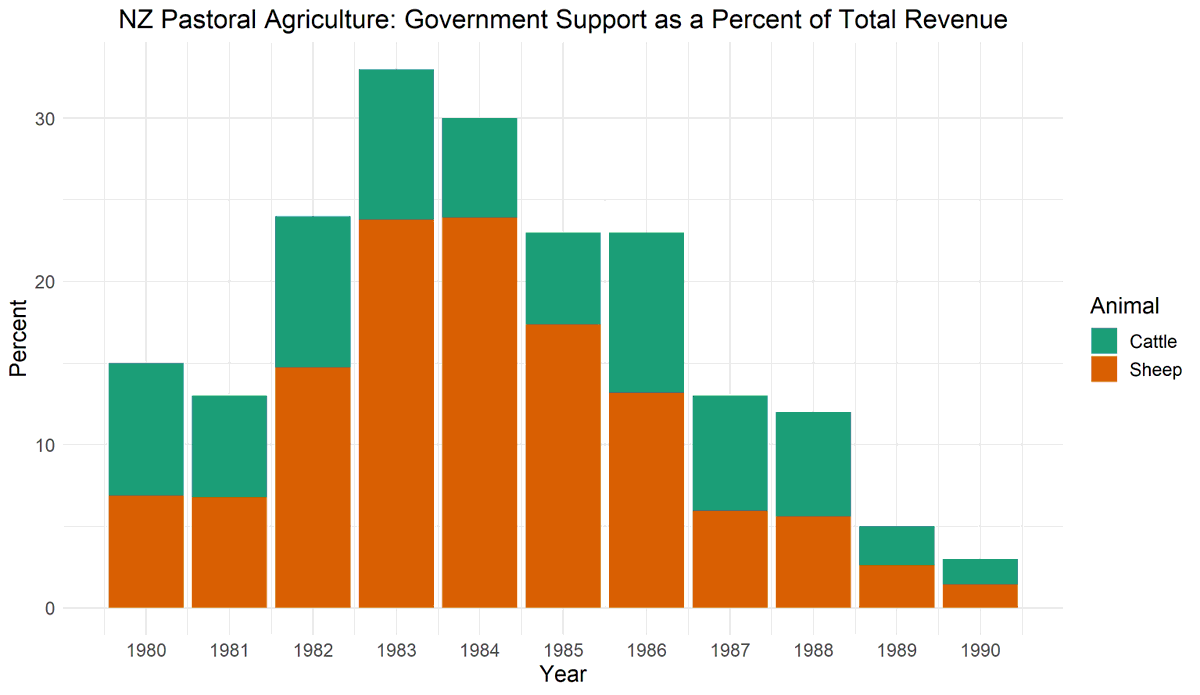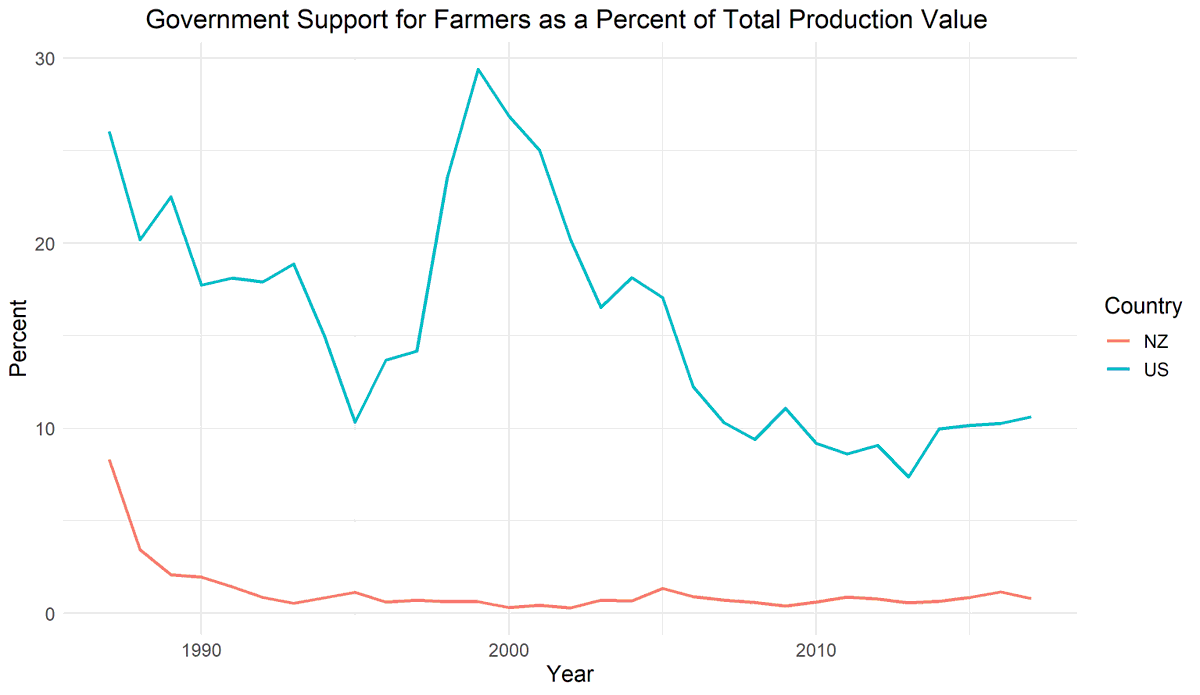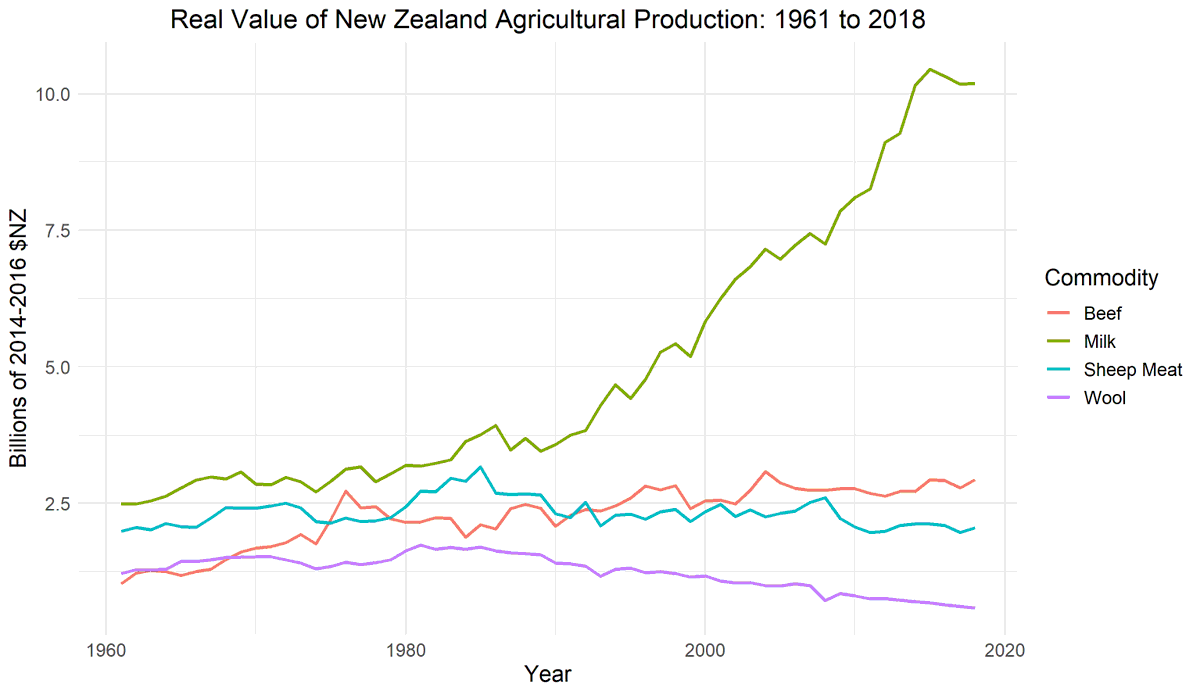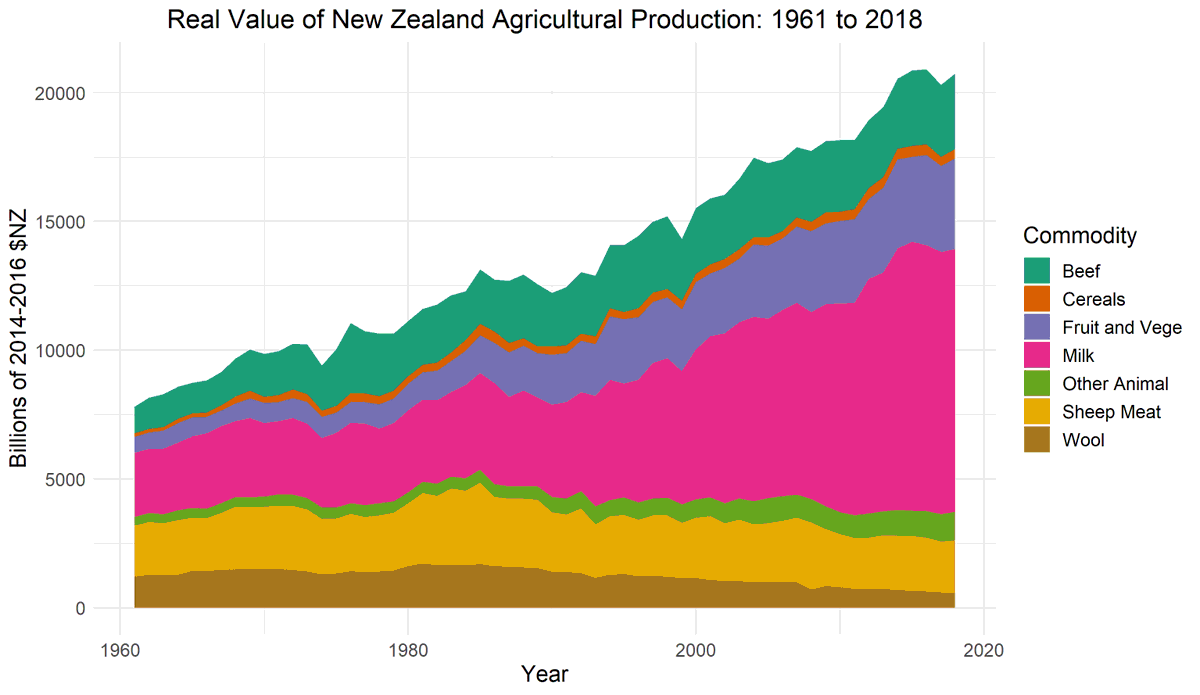1. This week in Ag Data News, I write about New Zealand. It& #39;s the land without agricultural subsidies and it& #39;s where I grew up on a sheep farm. https://asmith.ucdavis.edu/news/new-zealands-farmers-dont-want-governments-money">https://asmith.ucdavis.edu/news/new-...
2. What does New Zealand make you think of? The All Blacks rugby team, Lord of the Rings movies, Flight of the Conchords, Jacinda Ardern, Lorde?
There was a time when the answer to that question was sheep.
There was a time when the answer to that question was sheep.
3. In 1984, NZ had 70m sheep and 3.2m people. That& #39;s more than 20 sheep per person. The next year, the NZ government stopped its generous agricultural subsidy programs, leaving farmers to fend for themselves. By 2018, there were just 27m sheep, or 5.8 for every person.
4. The NZ government offered generous support to sheep farmers through an array of income support, price stabilization, and other subsidy programs. In 1983-84, more than 30% of the revenue of pastoral farmers came from the government. Pastoral means livestock that feed on pasture
5. This level of support was unsustainable, For much of the 20th century, the NZ economy thrived on the back of its farmers, who supplied the UK with meat, wool, and dairy products. Hidden beneath this success was a highly regulated and inefficient economy.
6. When export markets shrunk and macroeconomic stagflation arrived in the 1970s, the economy stalled. By 1984, New Zealand faced bankruptcy.
7. The Labour Party won the 1984 election and immediately set about deregulating the economy, beginning with removal of all agricultural support programs. Since that time, government financial support for New Zealand farmers has remained low, in contrast to the United States.
8. Dairy production began increasing almost immediately after the reforms and now produces more value than sheep meat, wool, and beef put together. The increase in dairy has come in large part from conversions of sheep farms to dairy (as I notice every time I visit my parents).
9. Dairy now comprises half of the value of agricultural production. Beef, sheep meat and wool make up another 25%. So, 35 years after the end of subsidies, pastoral sheep and cattle still dominate NZ agriculture. There are fewer sheep farms, but they are productive.
10. NZ farmers will tell you that they never want to back to a world with subsidies, in which they run their business to maximize government payments rather than maximizing profit earned in the marketplace. At least, I know one sheep farmer who says that. My dad.
11. The transition may be tough (a possible future Ag Data News topic), but agriculture can thrive without government financial support. https://asmith.ucdavis.edu/news/new-zealands-farmers-dont-want-governments-money">https://asmith.ucdavis.edu/news/new-...
12. We do not yet have a data app for international farm support. I created the graphs in this article using R code that pulls data from spreadsheets posted on various websites. http://files.asmith.ucdavis.edu/NZ.R ">https://files.asmith.ucdavis.edu/NZ.R"...

 Read on Twitter
Read on Twitter